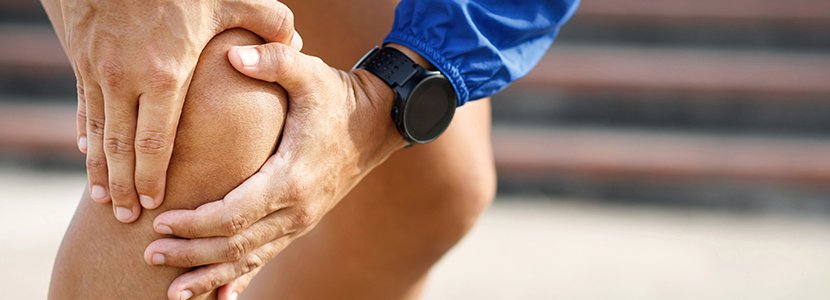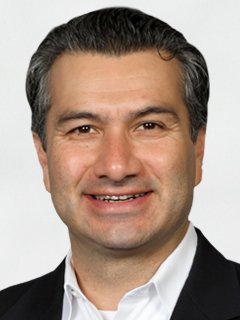Knee Pain in Weekend Warriors


Dr. Anthony Romero
Dr. Anthony Romero is an orthopedic surgeon and sports medicine specialist affiliated with the Cottage Center for Orthopedics. In this interview, he offers insight into common knee issues and treatment options for knee pain in aging athletes.
Knee injuries can happen to anyone at any age, but they are much more common in athletes who are age 40 and over. There are many reasons for this, because with aging:
- Bones and muscles begin losing mass and density
- The slick tissue that covers and cushions the end of bones (articular cartilage) becomes drier and more susceptible to wear and tear, leading to bone grinding against bone.
- The shock absorber tissue between the bones (meniscal cartilage) becomes less pliable, making it more susceptible to injury
- Tendons, the cords that attach muscle to bone, become stiffer, which can make them more likely to tear when overstretched
- Ligaments, the connective tissue that secures bones and joints, become less flexible and more likely be injured when pushed beyond their normal limits
“While maintaining athletic capacity as we age is an excellent goal, it is important to understand and respect these changes in knee anatomy and physiology as we continue to participate in sports,” said Dr. Anthony Romero, orthopedic surgeon affiliated with the Cottage Center for Orthopedics.
Since the knee is comprised of bones, ligaments, cartilage and tendons, different sports can affect different parts of the joint. For example, landing after a basketball rebound can have a different impact than running, which is different from a pivot on the soccer field or a lateral move across a pickle ball court.
Common Knee Problems:
- Ligament injuries – If you follow sports, you have probably heard about ACL tears. ACL (anterior cruciate ligament) tears and ruptures can happen when you land awkwardly after jumping, or when you pivot or twist your body, and they can cause instability of your knee.
- Torn cartilage – Most of the time, these are meniscus tears. A meniscus functions to absorb a great deal of impact every day from walking, running and playing sports, but can tear with pivoting or twisting maneuvers. These tears have a poor capacity to heal and often require arthroscopic surgery to treat.
- Tendonitis – Overusing a tendon while running, jumping or cycling can cause repetitive strain and inflammation.
- Arthritis - Osteoarthritis is the most common type of arthritis in the knee where the articular cartilage in the joint gradually wears away. It also can be caused by increased stress on the joint from injury or being overweight. It affects nearly one third of middle-aged adults.
- Fractures – Falls or impact in contact sports can cause bones of the knee, including the kneecap (patella), to break.
The good news is that most of the time these injuries can be treated without surgery. When you have knee pain, it is important to consult a physician. If necessary, diagnosis may require advanced imaging with an X-ray, CT or MRI, depending on the injury.
We have seen an increase in ACL tears during the pandemic in both younger and older patients. When increasing your exercise, it is important to gradually ramp up activities to avoid injury, especially in aging athletes.
Treatments:
Depending on the type and severity of the knee injury, a variety of treatment options is available, including:
- Medications to help relieve pain
- Physical therapy to strengthen and stabilize the knee
- Braces to support the knee joint
- Injections into the joint
- Corticosteroids to reduce inflammation
- Hyaluronic acid to lubricate, improve mobility and ease pain
- Platelet-rich plasma (PRP) to disable inflammatory factors and promote healing
- Surgery
- Arthroscopic surgery is minimally invasive through small incisions. A fiber optic camera and narrow tools are used to remove or repair damaged cartilage and reconstruct torn ligaments
- Partial knee replacement replaces only one compartment of the knee, leaving major ligaments intact
- Total knee replacement replaces the damaged knee with an artificial joint. Recent advancements in medical technology enable patients to recover faster. Normally, patients are up and walking the same day as surgery
- Osteotomy to realign the knee to relieve arthritis pain
An active lifestyle is critical to support and preserve function and overall health. There is a wide array of treatments to preserve knee function and mobility. Your sports medicine doctor can help select the option that is best for you.